When purchased, the boat had one noticeable and very critical issue; the mast support post was decayed and was sitting on crumbling, damp filler in the bilge. The previous owner had started to address this by cutting the rotten portion of the mast support post and acquiring a custom made jack up stainless steel plate to replace the rotten wood and take the load at the base of the post. After that, he had just given up. So, our task was to investigate this bilge filler, remove it, clean out the void, replace it and finally; add the mast support plate. Now, on this boat, the mast support is actually the door post of the head, made thicker than would be expected and taken down below the sole board to rest on the bilge filler. Hence the mast load is transferred down to the keel where it can be spread. In our case, the mast support was free floating below the floor level after years of water damage had taken their toll. There was perhaps a gap of almost a foot from the bottom of the post to the bilge level below it. It was this gap that the metal jack plate was designed to fill.
Since all the head walls and surrounding bulkheads were laminate covered and intact, it was decided against tearing out the complete door frame and post since we would then have to fabricate all new material in addition to dealing with the bilge filler. So we decided to continue with the repair as originally planned.
First question; what exactly was the damp, stone like substance in the bilge? It had a rough texture like sandstone but appeared man-made and poured into the bilge cavity, forward of the original glassed in section. It was not bonded to the hull but it would not move either. It could be chipped with a chisel and drilled like soft stone. Our thoughts were that it was some kind of epoxy/sand mix that had been poured in and not being sealed, it had allowed moisture to penetrate. For want of a better word, we called it ‘Moon Rock’.
We saw on some sites, the use of poured concrete as a bilge filler but ours was too soft to be that and we dismissed the use of concrete as a replacement for our issue. After some research in the internet we believe the Moon Rock was actually a mix of vermiculite and polyester resin. So, it was finally drilled and chipped out over the course of several long days until a void was now open. I should add that all this was done after the sole board and head floor had been cut away.

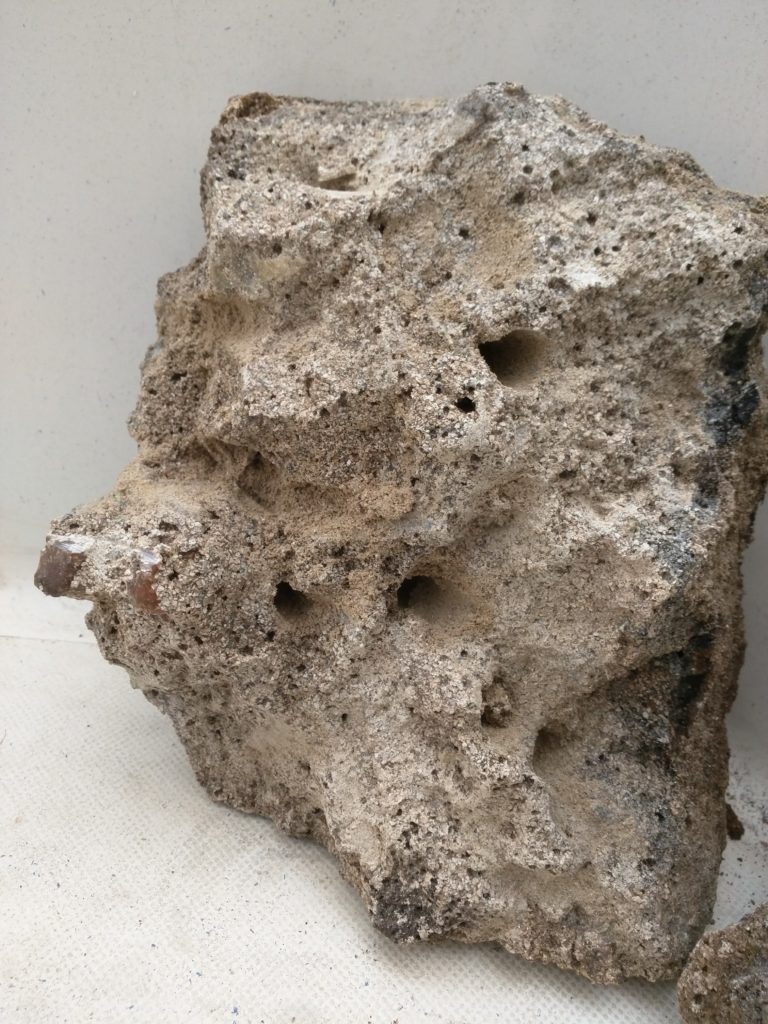
Without any guidance and direction on how best to proceed, we pressed on and cleaned out the bilge void with grinder and sander until down to the hull fiberglass. Next, we had to decide how best to fill the void with epoxy after considering other options like concrete, fiberglass / plywood sandwich, etc. Should we pour the epoxy all in one? If so, would the quantity of epoxy mix get too hot? What type of sand to use to make the epoxy mortar? What mixing ratio? In the end we decided to add a dividing wall in the bilge void and pour in two batches of filler.
The wall was made of ply that was glassed in on all sides. Next, we mixed epoxy resin with a fine, washed sand in a 3:1 mix and poured it in to the void in small batches over several days. The void was given a coating of epoxy prior to the pour and as each batch was added it was agitated to remove any air pockets and permit settlement.
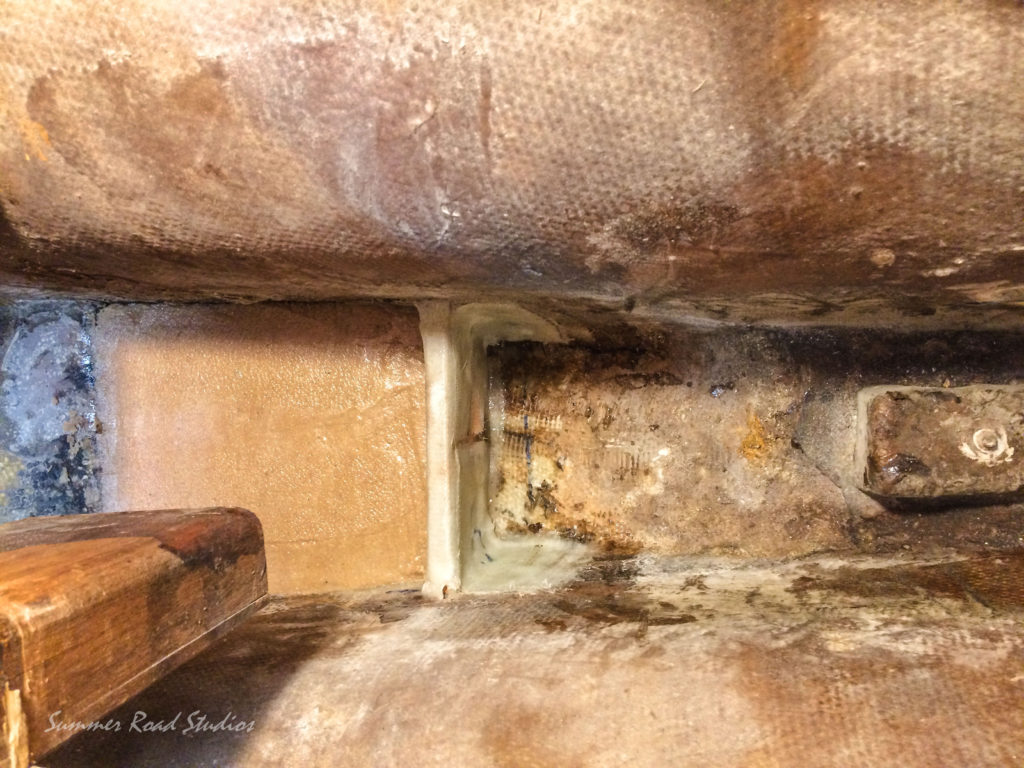
As the first half pour progressed, the support plate assembly was set up to see how much adjustment would be needed when complete. It was important for the overall stability that the support jacks would not be fully extended when finally in place.
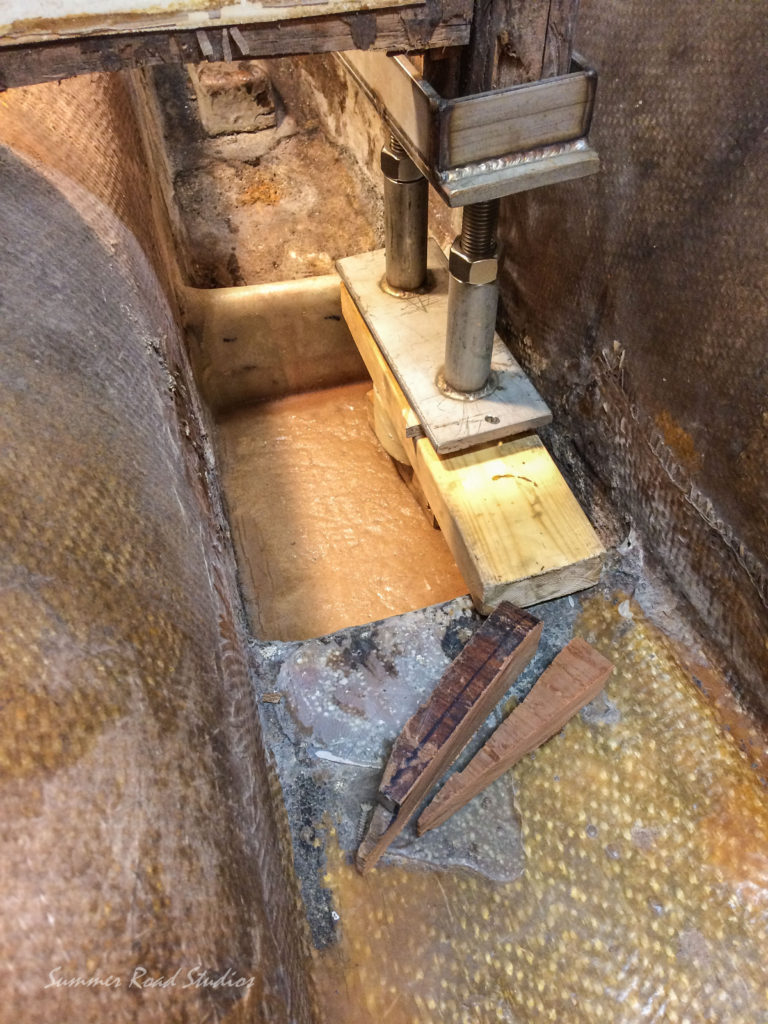
Once both halves of the bilge void had been filled, the dividing wall was trimmed down and next came layers of 1708 mat to seal the fill to the hull and avoid a repeat of the water issue.
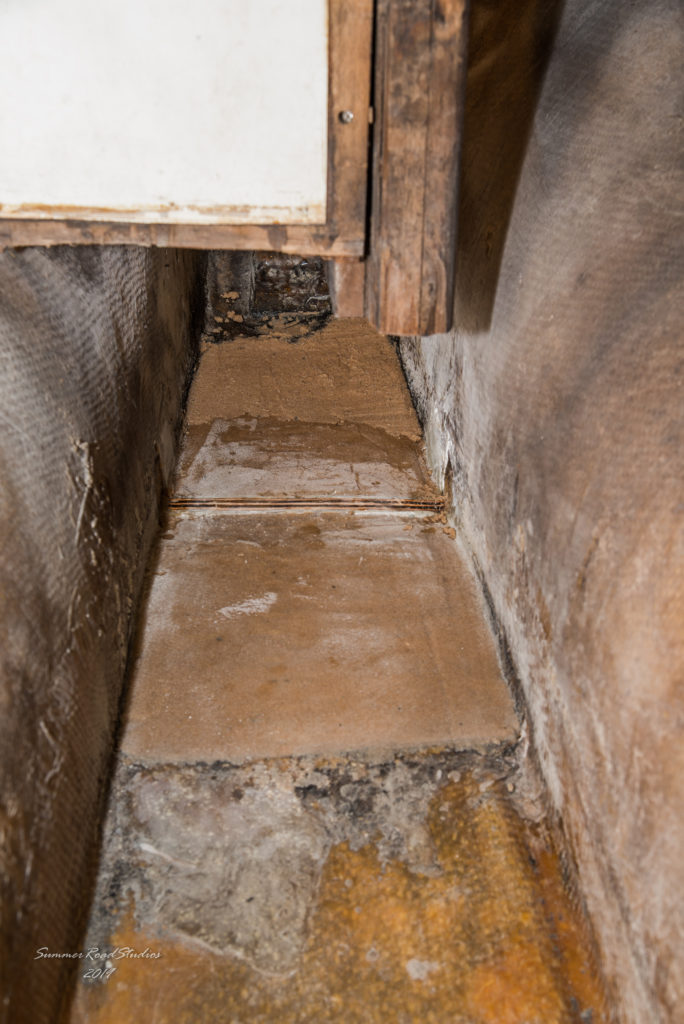
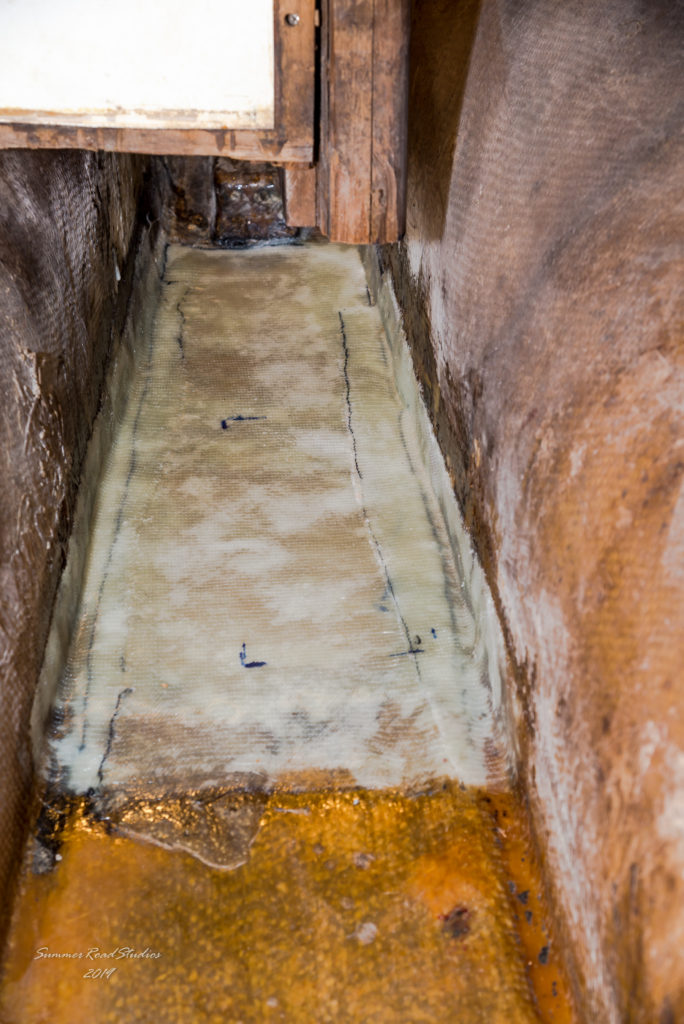
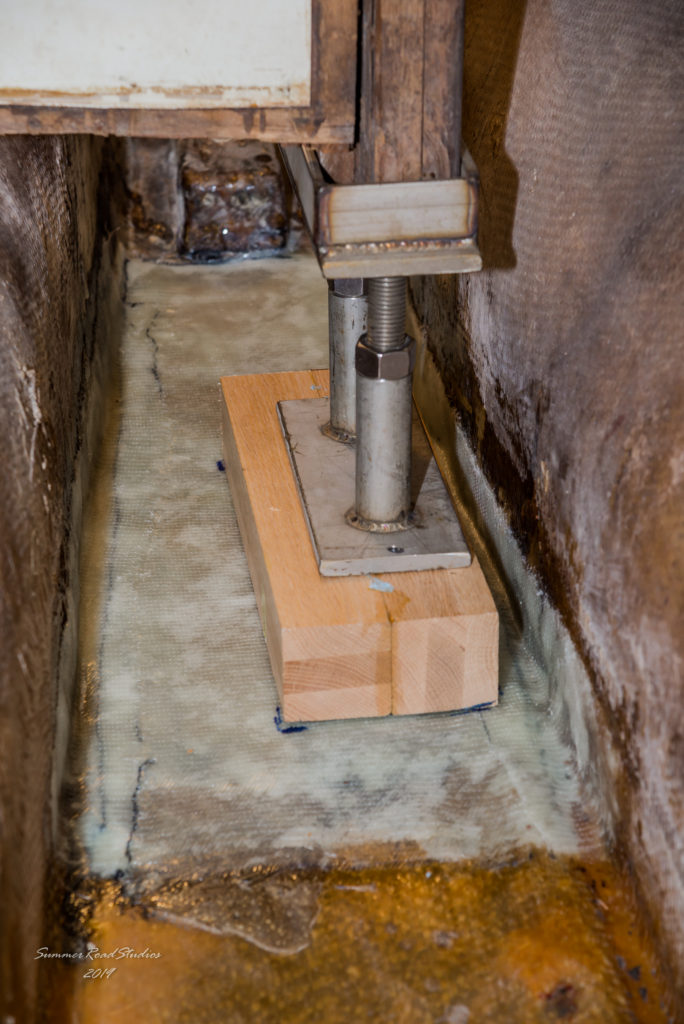
In order to compensate for the large gap between the mast support post and the bilge surface, a hardwood block was made that will provide a stable base for the jack plate whilst spreading the load on the bilge filler. You can see in the above picture that the block has been angled slightly to allow the free flow of any bilge liquids. The block will be epoxy coated and sealed to the base with marine sealant, which will allow for any slight movement and flexing. When the floor is rebuilt around this, we intend to add an inspection panel so that the jack plate integrity can be checked occasionally.
All in all, this small but vital repair to the boat has probably taken about nine months to accomplish. Not because of its complexity; merely the large number of concurrent tasks taking place elsewhere on the boat and the need to carefully assess our options as this task unfolded.
You can see initial discussions on this topic here:
http://www.cruisersforum.com/forums/f55/bilge-keel-delamination-209662.html
May 2019 – Final fitting of the mast support.
With the support block epoxy coated and the metal metalwork spray painted, we have gone ahead and set the parts in place. Although not yet bonded down, they will allow us to set other systems in place in the bilge void whilst providing support to the bulkhead and mast post. Here they are in place today.
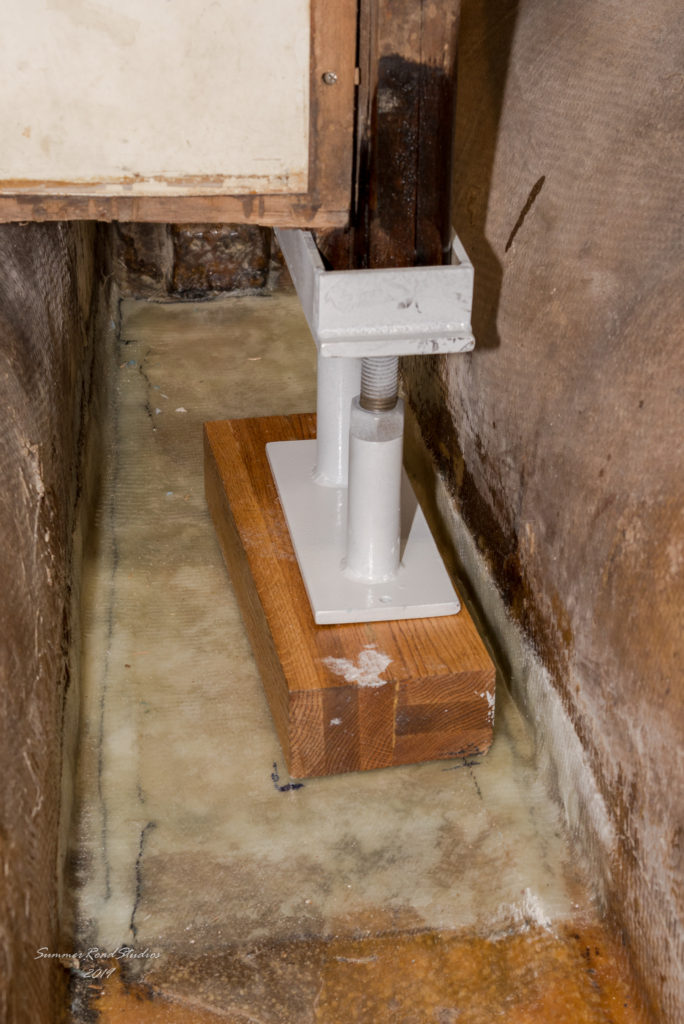
June 2019 – More moonrock!!!
We found more moonrock, this time towards the stern, right above the prop shaft:

Because the status of the moonrock is not nearly as bad as what we found under the mast supporting post, the plan is to seal it with epoxy and reinforce with plywood and fiberglass

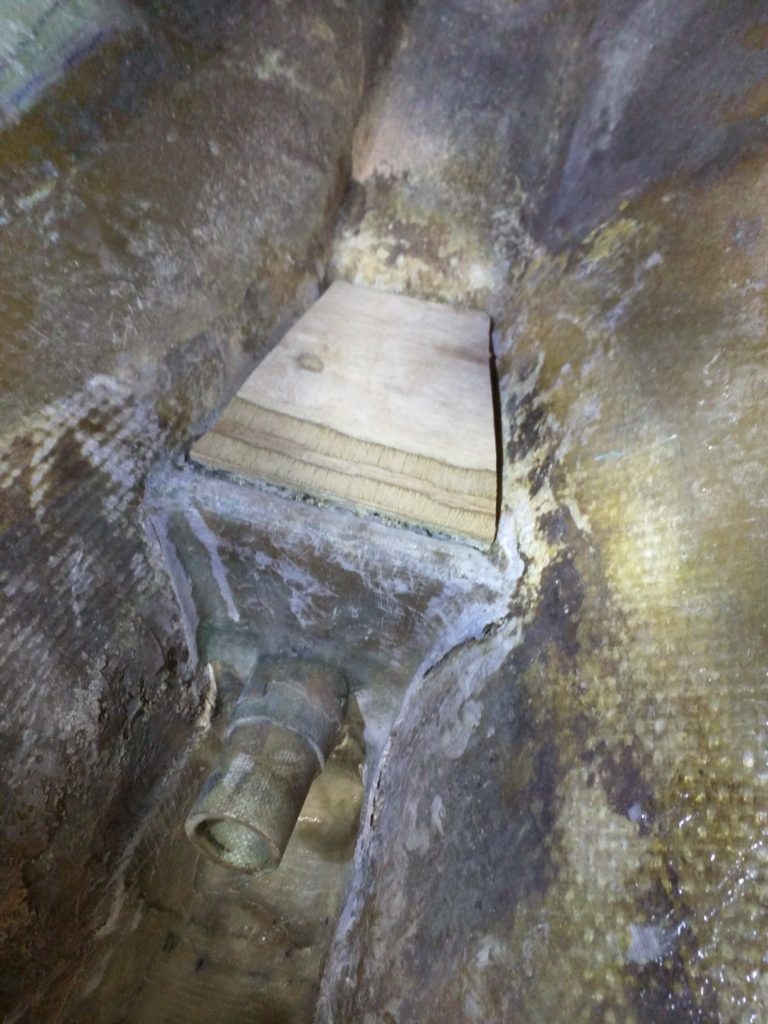

While we worked on this area we found a gap between the prop shaft and the hull
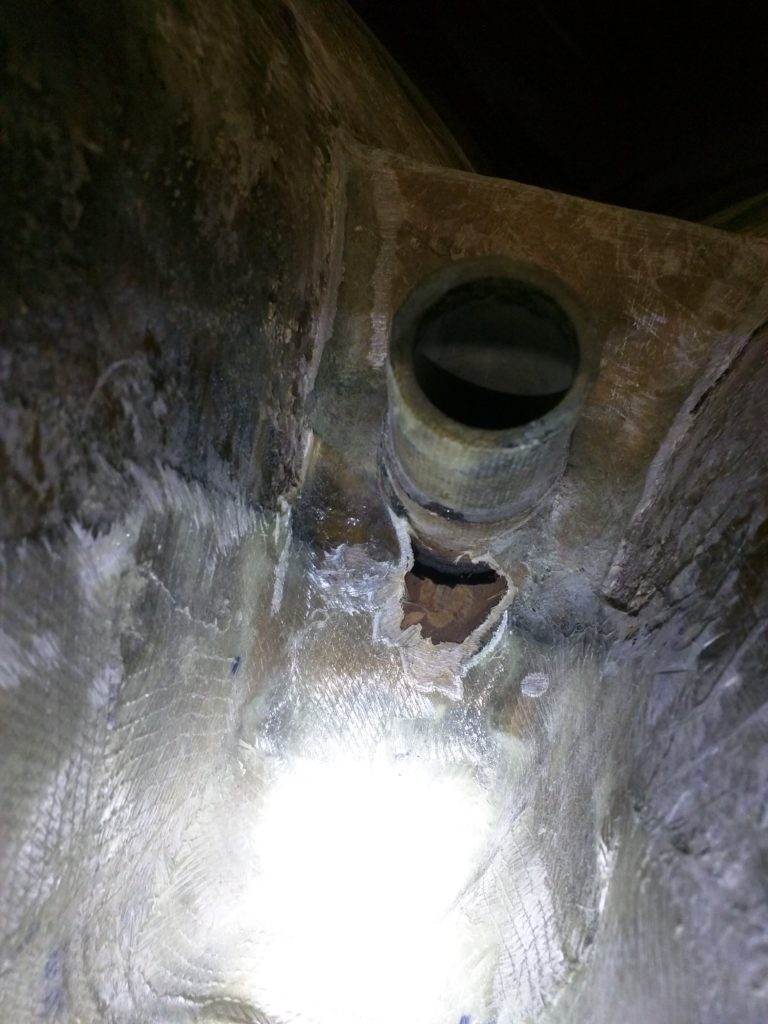
We will fill it up with thickened epoxy and reinforce all this area with few layers of 1708 may.
More photos coming soon…
